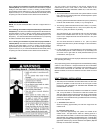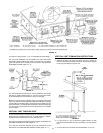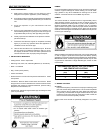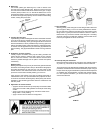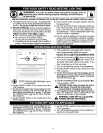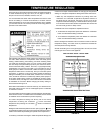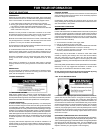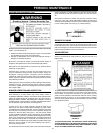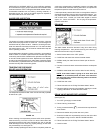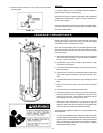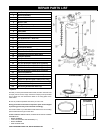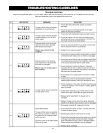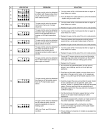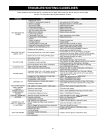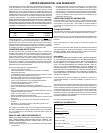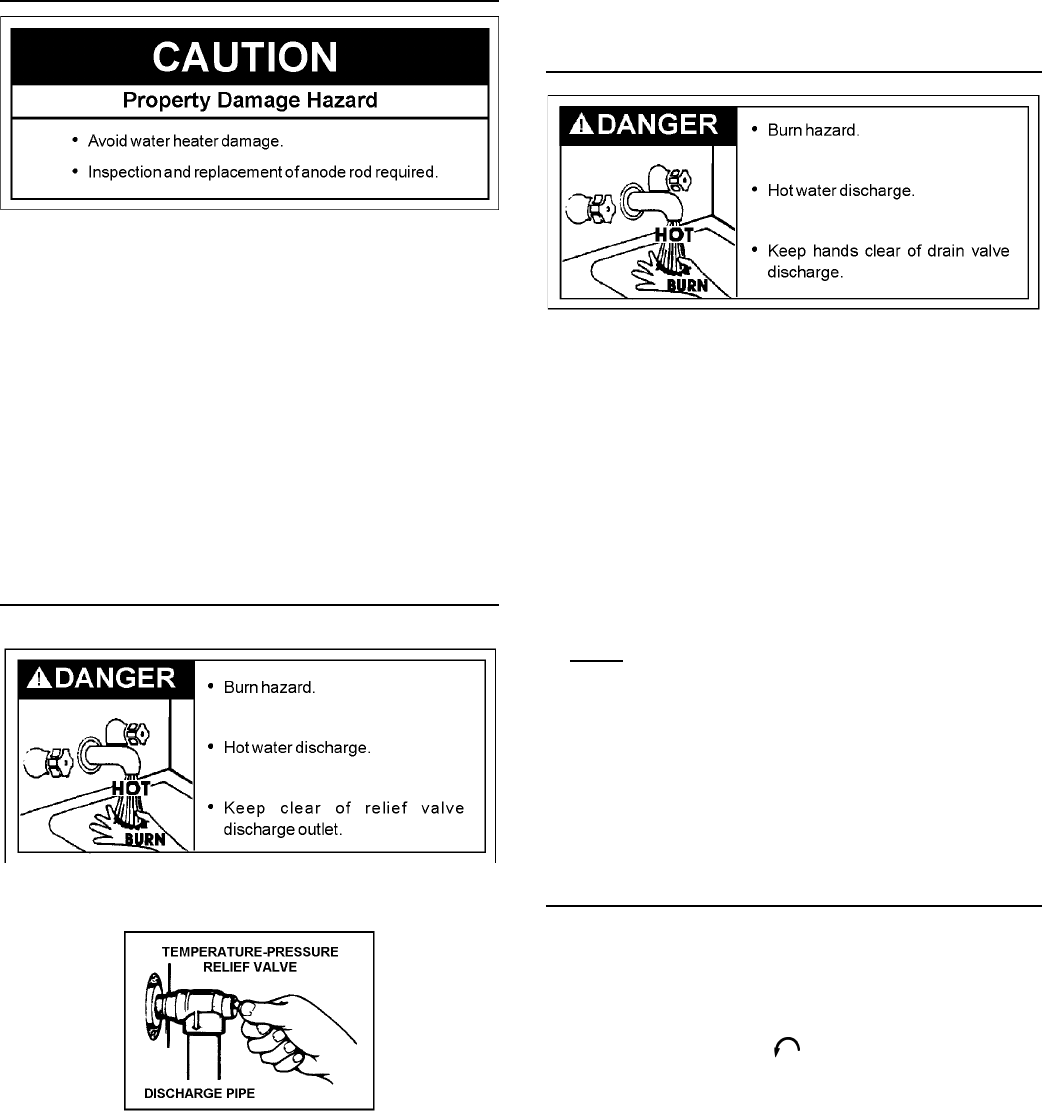
25
INSTALLED IN SUITABLE AREA: To insure suffi cient ventilation
and combustion air supply, proper clearances from the water heater
must be maintained. See “Locating the New Water Heater” section.
Combustible materials such as clothing, cleaning materials, or
fl ammable liquids, etc. must not be placed against or adjacent to
the water heater which can cause a fi re.
ANODE ROD INSPECTION
The anode rod is used to protect the tank from corrosion. Most hot
water tanks are equipped with an anode rod. The submerged rod
sacrifi ces itself to protect the tank. Instead of corroding the tank,
water ions attack and eat away the anode rod. This does not affect
the water’s taste or color. The rod must be maintained to keep the
tank in operating condition.
Anode deterioration depends on water conductivity, not necessarily
water condition. A corroded or pitted anode rod indicates high water
conductivity and should be checked and/or replaced more often than
an anode rod that appears to be intact. Replacement of a depleted
anode rod can extend the life of your water heater. Inspection should
be conducted by a qualifi ed technician, and at a minimum should be
checked annually after the warranty period.
TEMPERATURE-PRESSURE
RELIEF VALVE OPERATION
The temperature-pressure relief valve must be manually operated
at least once a year.
FIGURE 22.
When checking the temperature-pressure relief valve operation,
make sure that (1) no one is in front of or around the outlet of the
temperature-pressure relief valve discharge line, and (2) that the
water discharge will not cause any property damage, as the water
may be extremely hot, see Figure 22.
If after manually operating the valve, it fails to completely reset and
continues to release water, immediately close the cold water inlet
to the water heater, follow the draining instructions, and replace the
temperature-pressure relief valve with a new one.
If the temperature-pressure relief valve on the appliance weeps or
discharges periodically, this may be due to thermal expansion. You
may have a check valve installed in the water line or a water meter
with a check valve. Consult your local water supplier or service
agency for further information. Do not plug the temperature-
pressure relief valve.
DRAINING
The water heater should be drained if being shut down during
freezing temperatures. Also periodic draining and cleaning of
sediment from the tank may be necessary.
1. Set the blower switch to the “OFF” position.
2. CLOSE the cold water inlet valve to the water heater.
3. OPEN a nearby hot water faucet and leave open to allow for
draining.
4. Connect a hose to the drain valve and terminate to an adequate
drain.
5. OPEN the water heater drain valve to allow for tank draining.
NOTE: If the water heater is going to be shut down and
drained for an extended period, the drain valve should be
left open with hose connected allowing water to terminate
to an adequate drain.
6. CLOSE the drain valve.
7. Follow instructions in the “Filling The Water Heater” section.
8. Follow the lighting instructions on the label or see page 14 under
“Lighting Instructions” to restart the water heater.
DRAIN VALVE WASHER REPLACEMENT
(See Figure 23)
1. Turn “OFF” gas supply to water heater.
2. Follow “Draining” instructions.
3. Turning counterclockwise (
), remove the hex cap below the
screw handle.
4. Remove the washer and put the new one in place.
5. Screw the handle and cap assembly back into the drain valve
and retighten using a wrench. DO NOT OVER TIGHTEN.
6. Follow instructions in the “Filling The Water Heater” section.
7. Check for leaks.



